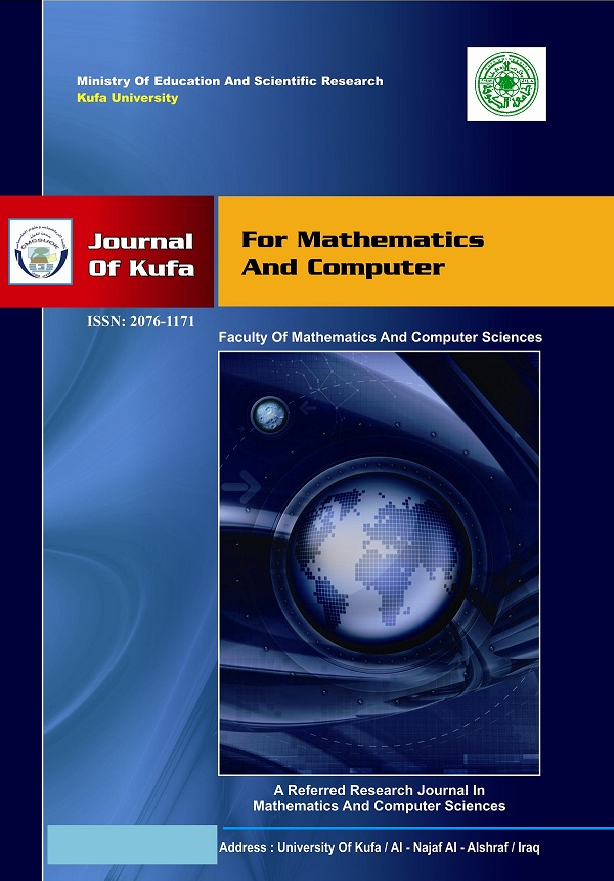Survey On Techniques For Cardiomegaly Prediction By Chest X-ray Images
DOI:
https://doi.org/10.31642/JoKMC/2018/100207%20Keywords:
Cardiomegaly, Deep Learning, Chest x-ray, Convolution Neural Network, CTRAbstract
Cardiomegaly is a condition characterized by an enlarged heart, which can be indicative of various underlying health issues. Early diagnosis of this condition lessens the patient's repercussions. The paper gives a thorough overview of the disease, its classifications, algorithms, and methods employed emphasizing the challenges encountered in this field. Traditional methods of diagnosing cardiomegaly rely on medical imaging techniques such as echocardiography or chest X-rays, which can be time-consuming and require specialized expertise to interpret. However, recent advances in deep learning algorithms have shown promise in accurately identifying cardiomegaly and its underlying causes from medical images. The use of deep learning algorithms in the diagnosis of cardiomegaly has the potential to improve both the speed and accuracy of diagnosis, leading to better patient outcomes and more efficient use of healthcare resources. Moreover, deep learning algorithms can potentially identify subtle changes in heart size over time, allowing for earlier detection and treatment of cardiomegaly.
Downloads
References
A.Yadav, L.Gediya1, A.Kazi,” Heart Disease Prediction Using Machine Lerning”. International Research Journal of Engineering and Technology, Volume: 08 Issue: 09 | Sep 2021.
T.Gupte,M.Niljikar,M.Gawali,V.Kulkarni,A.Kharat, A.Pant,” Deep Learning Models for Calculation of Cardiothoracic Ratio from Chest Radiographs for Assisted Diagnosis of Cardiomegaly”.2021, IEEE, DOI: 10.1109/icABCD51485.2021.9519348.
M.Nawaz,T.Nazir,J.Baili,M.Attique ,YJin Kim , J.Hyuk Cha,” C Xray-EffDet: Chest Disease Detection and Classification from X-ray Images Using the EfficientDet Model”,2023, https://doi.org/10.3390/diagnostics13020248.
J. X. Wu et al., “Limitations of cardiothoracic ratio derived from chest radiographs to predict real heart size: comparison with magnetic resonance imaging,” Insights Imaging, vol. 12, no. 1, pp. 47824–47836, 2022, doi: 10.1109/ACCESS.2022.3171811.
D.Grant, B.W. Papież, G.Parsons, L. Tarassenko & A.Mahdi.” Deep Learning Classification of Cardiomegaly Using Combined Imaging and Non-imaging ICU Data”,2021. https://doi.org/10.1007/978-3-030-80432-9_40.
M. S. Lee et al., “Evaluation of the feasibility of explainable computer-aided detection of cardiomegaly on chest radiographs using deep learning,” Sci. Rep., vol. 11, no. 1, pp. 1–11, 2021, doi: 10.1038/s41598-021-96433-1.
S. Sarpotdar, “Cardiomegaly Detection using Deep Convolutional Neural Network with U-Net”. doi.org/10.48550/arXiv.2205.11515.
I. Chamveha,T. Promwiset, T. Tongdee, P. Saiviroonporn, and W. Chaisangmongkon, “Automated Cardiothoracic Ratio Calculation and Cardiomegaly Detection using Deep Learning Approach,” pp. 1–11, 2020, [Online]. Available:http://arxiv.org/abs/2002.07468. :doi.org/10.48550/arXiv.2002.07468
P.Kora , C. Pin Ooi , O.Faust ,et al,” Transfer learning techniques for medical image analysis: A review”,2022. https://doi.org/10.1016/j.bbe.2021.11.004.
H. Bougias, E. Georgiadou, C. Malamateniou, and N. Stogiannos, “Identifying cardiomegaly in chest X-rays: a cross-sectional study of evaluation and comparison between different transfer learning methods,” Acta radiol., vol. 62, no. 12, pp. 1601–1609, 2021, doi: 10.1177/0284185120973630.
D. Cardenas, J. Ferreira Junior, R. Moreno, M. Rebelo, J. Krieger, and M. Gutierrez, “Multicenter Validation of Convolutional Neural Networks for Automated Detection of Cardiomegaly on Chest Radiographs,” pp. 179–190, 2020, doi: 10.5753/sbcas.2020.11512.
A. Bouslama, Y. Laaziz, and A. Tali, “Diagnosis and precise localization of cardiomegaly disease using U-NET,” Informatics Med. Unlocked, vol. 19, no. January 2021, 2020, doi: 10.1016/j.imu.2020.100306.
H.Yoo, S. Han, and K. Chung, “Diagnosis Support Model of Cardiomegaly Based on CNN Using ResNet and Explainable Feature Map,” IEEE Access, vol. 9, pp. 55802–55813, 2021, doi: 10.1109/ACCESS.2021.3068597.
C. H. Lin et al., “Posteroanterior Chest X-ray Image Classification with a Multilayer 1D Convolutional Neural Network-Based Classifier for Cardiomegaly Level Screening,” Electron., vol. 11, no. 9, 2022, doi: 10.3390/electronics11091364.
M. Arsalan, M. Owais, T. Mahmood, J. Choi, and K. R. Park, “Artificial intelligence-based diagnosis of cardiac and related diseases,” J. Clin. Med., vol. 9, no. 3, 2020, doi: 10.3390/jcm9030871.
T. Gupte, M. Niljikar, and M. Gawali, “Deep Learning Models for Calculation of Cardiothoracic Ratio from Chest Radiographs for Assisted Diagnosis of Cardiomegaly” . ://doi.org/10.48550/arXiv.2205.11515.
Q.Que,4 , Z. Tang, R.Wang , Z. Zeng ,J.Wang , M. Chua1 , T.Sin Gee, X.Yang , B. Veeravalli,” CardioXNet: Automated Detection for Cardiomegaly Based on Deep Learning”,IEEE, DOI: 10.1109/EMBC.2018.8512374.
J. WU,, C. PAI, C.KAN,et al,” Chest X-Ray Image Analysis With Combining 2D and 1D Convolutional Neural Network Based Classifier for Rapid Cardiomegaly Screening”,2022.IEEE, DOI: 10.1109/ACCESS.2022.3171811.
Downloads
Published
How to Cite
Issue
Section
License
Copyright (c) 2023 Dina Ahmed, Enas Hamood Al Saadi

This work is licensed under a Creative Commons Attribution 4.0 International License.
which allows users to copy, create extracts, abstracts, and new works from the Article, alter and revise the Article, and make commercial use of the Article (including reuse and/or resale of the Article by commercial entities), provided the user gives appropriate credit (with a link to the formal publication through the relevant DOI), provides a link to the license, indicates if changes were made and the licensor is not represented as endorsing the use made of the work.











